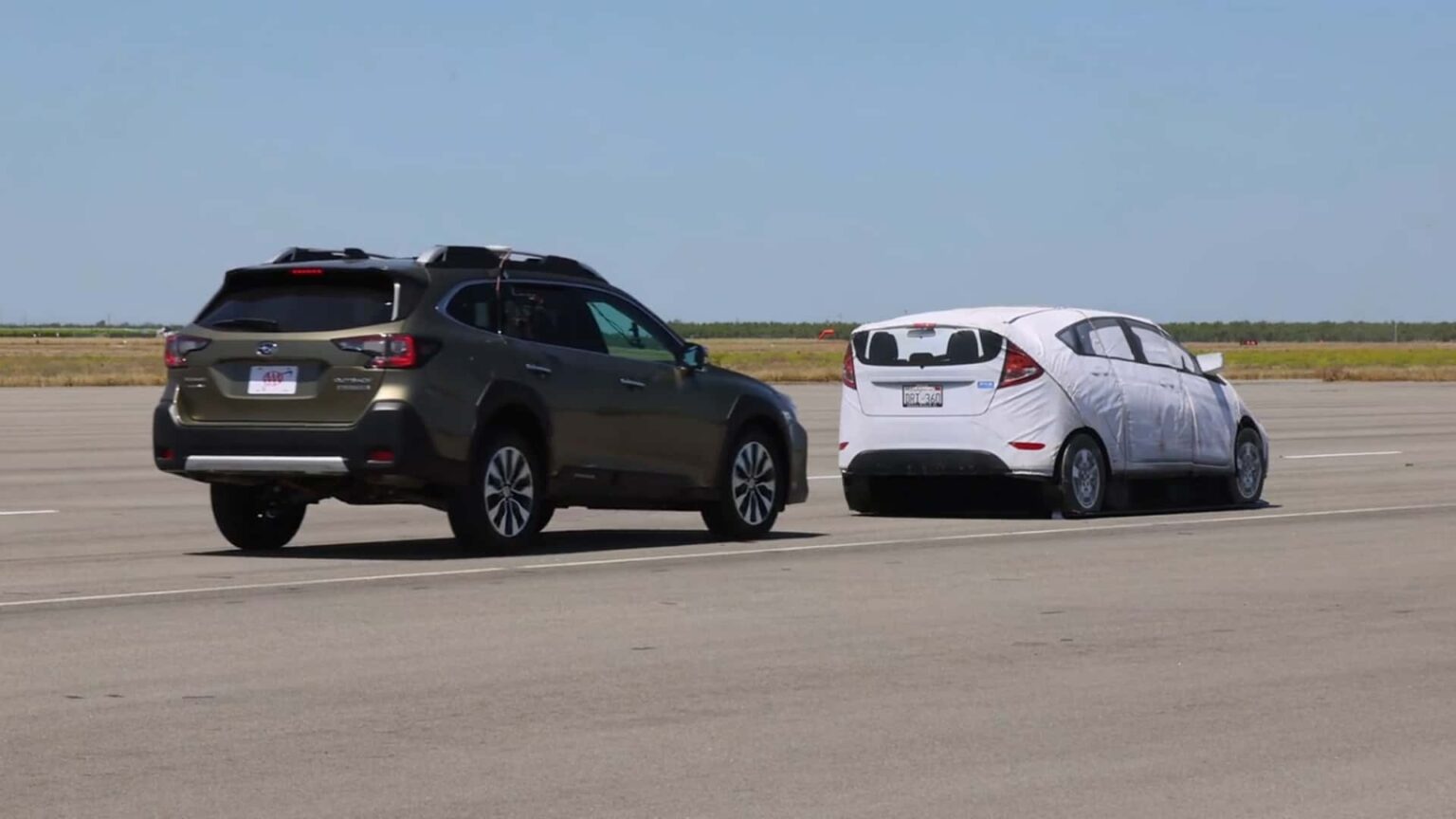- A study from AAA shows vast improvements in frontal auto emergency braking systems.
- New vehicles are twice as likely to avoid collisions versus those from six years ago.
- At speeds below 35 mph, new vehicles scored 100 percent for collision avoidance.
Modern safety tech isn’t foolproof by any means, but things are getting better. That’s the conclusion from AAA, which recently shared the results of a study into automatic emergency braking (AEB) systems. Compared to just six years ago, new vehicles are twice as likely to avoid a frontal collision in an avoidable situation. In fact, it’s such an improvement that AAA reports a full 100 percent success rate across the board for collision avoidance at speeds below 35 mph.
AAA based its findings on evaluations from six vehicles—three old, three new. The sample included 2024 versions of the Nissan Rogue, Jeep Grand Cherokee, and Subaru Outback, facing off against their predecessors from 2018 (2017 for the Jeep). The vehicles were thoroughly inspected to ensure all systems were fully functional and operating correctly. The older test vehicles were treated to new tires, brakes, and a four-wheel alignment, and then driven 500 miles to make sure the new parts were broken in. Any software updates, where applicable, were performed.
The target was a so-called soft car, a life-size hatchback-shaped test rig made of foam with a vinyl exterior that looks a bit like a Ford Focus. Tests were conducted at 12 mph, 25 mph, and 35 mph. Pedestrian testing was not performed.
Of the older models, only the Jeep Grand Cherokee failed to stop at 12 mph. Similarly, the Subaru was the only old model to successfully stop at all speeds. The Nissan cleared the 12-mph run but failed at 25 mph. Both the Grand Cherokee and the Rogue sailed into the target at 35 mph, having barely started to slow before contact.
Flash forward to 2024. All three cars stopped without a collision. A deeper dive shows the AEB system activated much earlier for each vehicle. AAA notes that at speeds above 35 mph, the systems aren’t as effective. In a separate test, three of four avoided a collision at 45 mph. None could avoid a frontal crash at 55 mph.
“Since we began testing AEB in 2014, the advancements by automakers are commendable and promising in improving driver safety,” said Greg Brannon, director of automotive engineering research at AAA. “There is still significant work ahead to ensure the systems work at higher speeds.”
Read the full article here



